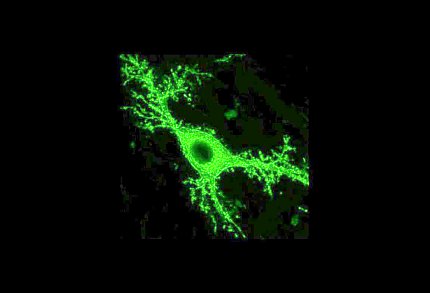Epilepsy Study Links Mossy Brain Cells to Seizures and Memory Loss

Photo: Ivan Soltesz, Stanford University
A small group of cells in the brain can have a big effect on seizures and memory in a mouse model of epilepsy. According to a new study in Science, loss of mossy cells may contribute to convulsive seizures in temporal lobe epilepsy (TLE) as well as memory problems often experienced by people with the disease. The study was funded by NINDS.
“The role of mossy cells in epilepsy has been debated for decades,” said Dr. Vicky Whittemore of NINDS. “This study reveals how critical these cells are in the disease, and the findings suggest that preventing loss of mossy cells or finding ways to activate them may be potential therapeutic targets.”
Mossy cells, named for the dense moss-like protrusions that cover their surface, are located in the hippocampus, a brain area that is known to play key roles in memory. Loss of mossy cells is associated with TLE, but it is unknown what role that plays in the disease. Using state-of-the-art tools, Dr. Ivan Soltesz and his team at Stanford University were able to turn mossy cells on and off to track their effects in a mouse model of epilepsy.
“This study would not have been possible without the rapid advancement of technology, thanks in part to the BRAIN Initiative, which has encouraged scientists to develop innovative instruments and new ways to look at the brain,” said Soltesz. “It’s remarkable that we can manipulate specific brain cells in the hippocampus of a mouse. Using 21st century tools brings us closer than ever to unlocking the mysteries behind this debilitating disease.”
In TLE, many seizures, known as focal seizures, originate in one part of the brain and are evident on electroencephalography scans that show the brain’s electrical activity. These seizures can result in symptoms such as twitching or a strange taste or smell, and many people with TLE might not be aware that these symptoms are seizures. Sometimes, focal seizures can spread throughout the entire brain becoming generalized, resulting in involuntary muscle spasms, or convulsions, that affect the limbs and other parts of the body as well as loss of consciousness.
